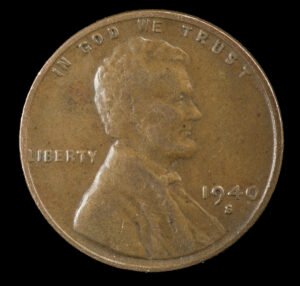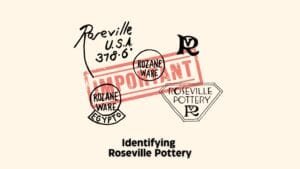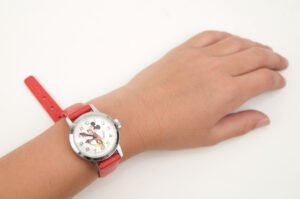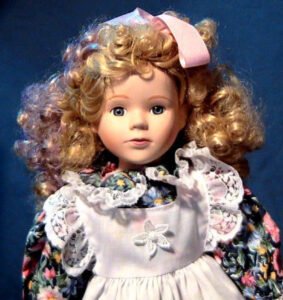Hoosier Cabinets are one of the most loved and pricey cabinet styles of old, and they are still popular today. Those well-structured standalone cabinets would have everything you could ask for, from a sifter to a cookbook holder, making them out-of-the-box!
And although these 1900s cabinets didn’t make it past the post-war era, they’re still trendy and precious for their unique designs! But can you really spot and appraise a Hoosier cabinet with just their designs, or are there other features to identify?
Let’s take a look!
Key Takeaways
- You’ll see some extra features like labeled racks, flour bins, and iron boards with an old Hoosier cabinet.
- Vintage Hoosier cabinets with Wood, Porcelain-coated, or Glass shutters fetch the best returns.
- You can check your cabinet’s age by its series number or brand logo. So, don’t forget to check the shutters and drawers for the stamp.
- Try getting medium-sized Boone or McDougall cabinets with brass hardware and metal tags for more value.
Key Identification of Antique Hoosier Cabinets
An antique Hoosier cabinet is a freestanding cabinet with a rolling pin & cookbook holder, a flour sifter, and many more exciting features as follows:
- Labeled sections for kitchen utensils and dry goods
- Pull-out working surfaces with wood, zinc, tin, or porcelain walls
- Dedicated sugar and flour bins
- In-built accessory racks for aprons, kitchen cloths, food jars, and canisters
- Original metal tags with logos and brand names
- Decorative features – Wood carvings, Glass doors & Brass Hardware
Brief History of Hoosier Cabinets
Just as the name says, these cabinets first popped up in Hoosier in the 1890s. At that time, they had a simple aim – to be a one-stop shop and sort kitchen stuff. So, makers tweaked the racks to include extra places for bins and cans. But it still looked basic.
Things changed when local brands added sugar and flour sifters to the cabinets. But they still couldn’t move it properly! So, by 1920, they worked on lowering lifts, ant-proof sides, and canisters. And finally, the design was complete!
But then, there was another problem, the Economic Depression. People started buying cheaper, minimal products to save money. So, demand for Hoosier cabinets decreased, and brands had to stop making them. That’s why they are rare and expensive today!
3 Types of Vintage Hoosier Cabinets With Values
Well, people couldn’t use the same Hoosier cabinet for all kitchen sizes. So, makers explored more options and designs, leading to the three types below.
1. Boone Cabinets
Boone’s a sturdy, solid-oak cabinet for medium-sized kitchens. Usually, it comes with linear, labeled flour bins, racks, and sifters. But you might find some models with abstract ironing boards, pull-out desks, and drawers, too! So, depending on that, this one costs $200 – 1500.
2. Napanee Hoosier Cabinets
Napanee is a 48-inch maple cabinet for all small, vintage kitchens! It has some really flexible features like sliding shelves and low-section racks for compact spaces. Plus, you’ll see some pull-out desks, cookbook stands, and drawers, which raise their value to $1200.
3. McDougall Cabinets
If your cabinet has carved or grooved shutters, it might be a McDougall cabinet worth $300 – 4000. Such cabinets are medium-sized and often have brass or nickel rails and handles. Also, these use natural stains and varnishes instead of veneers!
7 Factors to Identify & Value Antique Hoosier Cabinets
Now let’s check out other factors to help you price and age your Hoosier cabinet:
1. Manufacturing Date & Age
If your Hoosier cabinet is antique, say about 100 -120 years old, you can sell it for up to $7000 in the antique market. But for that, you must be sure of the cabinet’s age!
One certified way to find that out is to check the stamped dates or years at the back. But if you can’t see any numbers, check the clues below:
Hoosier Cabinets from the 1890s:
You’ll spot these Hoosier cabinets by their simple designs, low drawers, and Tambour doors. Also, you might see an old make with solid wood frames and varnishes. These won’t have any carvings, but you’ll see some built-in lids and sifters at the top.
Hoosier Cabinets from the 1920s:
The 1920s was a functional era! So, all the Hoosier cabinets from this era will have numerous accessories – flour bins, spice racks, ironing boards, and whatnot! Plus, most of them also have a built-in ventilation and lowering system. Overall, they cost $300 – 4000.
Hoosier Cabinets from the 1930s:
If you want sleek, Art Deco-style cabinets, the 1930s models, costing $300 – 3000, are perfect! Such cabinets have light zinc or porcelain walls, decorative carvings, and moldings too! Also, these have paint or enamel finishes instead of varnish.
Another way to check your cabinet’s age is to check the series number at the back! You can price it according to the numbers using this table:
| Year | Age | Series Number | Estimated Value |
| 1890s | 133 years | 4000, 4010, 4020 etc. | $1000 – 7000 |
| 1900s | 123 years | 45, 46, 47, 48 etc. | $300 – 4000 |
| 1920s | 103 years | 1000, 1001, 1002 etc. | $300 – 3000 |
Try to get Hoosier cabinets with tin-lined drawers or metal tags for an old make.
2. Shutter Materials
Well, it’s not only about the age! Your cabinet’s shutter materials affect its final resale value too! That’s because some shutters were solid, some were hollow, and some were imported! So, let’s check their features and costs.
| Old Hoosier Cabinet Shutter Materials | Top Features | Average Cost |
| Wood – Oak, Maple, Pine & Walnut | Solid sections with warm and rustic lacquers or varnishes | $300 – 4500 |
| Porcelain-coated | Smooth, glossy, and stain-resistant shutters with white, cream, green, or blue finishes | $300 – 2000 |
| Zinc-coated | Dark and dull shutters with a gray, industrial look | $200 – 1500 |
| Glass | Transparent or translucent surfaces with clear, frosted, or etched finishes | $400 – 3000 |
Try to get Apple-green or Ivory-colored cabinet shutters for more returns.
3. Hardware Materials
You’ll get brass or nickel hinges and handles with most vintage Hoosier cabinets. Of these, the brass ones are older and have a value of $6 – $15 per hinge. On the other hand, the white nickel hinges cost $1 – 5 per hinge. So count the hinges and add the values to the base price!
Pick Hoosier cabinets with vintage lever-operated or offset hardware for a good value.
4. Co-brands
Now, it’s not that Hoosier cabinets were made by the Hoosier Manufacturing company alone! In fact, in the 1900s, many more brands joined this race! So you just have to check their logo and match it with our table for the value:
| Vintage Hoosier Brands | Year | Estimated Value |
| Hoosier Manufacturing Co. | 1890s | $2000 – 5000 |
| Coppes Brothers and Zook | 1900s | $300 – 3000 |
| G.I Sellers & Sons | 1900s | $400 – 2000 |
| Campbell-Smith-Ritchie Company | 1920s | $300 – 1500 |
5. Cabinet Accessories
Another factor that tells you whether your old Hoosier cabinet is real or not is its accessories. In fact, such pieces even raise the overall value by 10 – 12%.
So here’s a list of the top attachments to look for:
- Flour and sugar bins with attached sifters and collection bowls
- Glass canisters and spice jars by Sneath Glass Company
- Pot racks, hooks, and well-ventilated bread boxes
- Built-in ant traps
- Collapsible iron boards, rolling boards, and writing surfaces
- Coffee grinders with adjustable knobs and cranks
- Cookbook holders with flexible clips and ledges
6. Condition
A faded or discolored Hoosier cabinet will not fetch much despite its age and materials. Even chipped or deformed cabinets lose about 10 – 20% of their value. The same goes for moldy or warped cabinets. So, better ventilate them properly and save them from the fungus!
7. Cabinet Restoration
You can obviously repair any broken cabinet rack or handle. But try to keep the original finishes and materials the same! That’s because a fully restored Hoosier cabinet loses its value by 20 – 25%. So, make sure to preserve the old polish and patina!
Where Can You Sell Old Hoosier Cabinets?
You can sell your old Hoosier cabinets on various online advertising sites like eBay, Etsy, and Craiglist. Otherwise, just photograph your item correctly and bid on it in any offline antiques shop.
What is the Original Color of a Hoosier Cabinet?
Original Hoosier cabinets come in three colors – Bare wood, Green Apple & Ivory. But the restored ones might have many more finishes like red, blue, green, and black.
What Cleaners Do I Use for My Hoosier Cabinets?
You can use any gentle multipurpose or dish cleaners to scrub your Hoosier cabinets. However, avoid using any abrasive cleaners or vinegar, as it may degrade the surface polish.
Even though makers stopped making Hoosier cabinets in the 1920s, their solid wood bodies and extra features attract antique lovers even today! It’s just that you need to check their materials, brands, and dates to get good returns.
So, use this guide to spot and value your special Hoosier cabinet correctly! You could also join to learn more about valuing antique dressers, antique armoires, or Bassett furniture!
Note: This article is intended for informational, educational, and entertainment purposes only. Some images are illustrative and may not represent actual brands, products, or related entities. All trademarks, product names, brand logos, packaging, and other intellectual property referenced remain the exclusive property of their respective owners. Any brand mentions or references are provided solely for descriptive and educational context and do not imply any formal or commercial association.









